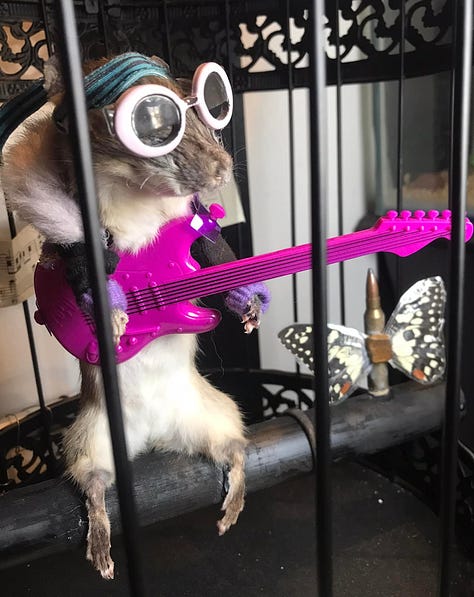On trying to buy a human skull
A journey into the weirdest groups on the internet
So in the last few weeks I’ve been passingly interested in acquiring a human skull.
Okay, I know it sounds bad, but I promise my motivations are pretty innocent. I’m taking drawing more seriously these days and they're a good object to sketch. The more you understand the shape of a skull – its structure and boney undulations – the better you can draw a portrait. So I’m not a ghoul, I’m an artist. Or at the very least a ghoul wearing a beret.
I explained this to a friend who had tentatively inquired what was behind my search.
“Okay,” he said. “That’s harmless enough. But why does it have to be REAL?”
Isn’t this a stupid question? I thought I’d include it here so we could all have a laugh. Hahaha. People can be so ridiculous.
Unfortunately it’s a little difficult to get a real skull these days. Like so many fun and totally normal hobbies, laws written by boring nerds have gotten in the way. In Australia, buying and selling human remains has been illegal since 1982.
But here’s the thing. If you were studying medicine in Australia, up until the 1970s, it was standard practice to have a human skeleton for anatomical study. Of course, those sets are still around. It’s thought that they’re mostly sitting forgotten in cupboards and garages, waiting to scare the shit out of people sorting through their relative’s estates.
If it was illegal to merely own human remains, they would be unknowingly breaking the law. You also don’t want anyone dumping whole-ass skeletons in the garbage. That is how waste disposal plants get shut down and turned into crime scenes.
But if you can’t sell them, does that mean that you have to keep some poor dead guy in your possession forever? Though I think that’s a very funny idea, no. That’s not the case either. This is why gifting human remains – bones and wet samples – is totally legal.
It’s a door left slightly ajar, allowing enthusiasts and collectors to sneakily do their trade. Like most oddballs with socially unacceptable interests, these people gather on Facebook groups. In one feverish evening, I joined them all.
Over the next few days, my phone would ping constantly with notifications that my group requests had been accepted. I found myself in a world filled with the most batshit people selling the most batshit things.
“Anyone in need of human teeth?” One person called Debbie wrote in a post. “$7 each”.
With no further context, she posted this picture:
Where had these teeth come from? Why was she selling them? Why would anyone be in need of them? I seemed to be the only one with questions. All the comments were strangely incurious.
“Nice,” wrote a casual admirer.
“How much for five?” another asked.
“$7 each,” the uncompromising Debbie replied.
I saw, of course, plenty of skulls for sale, mostly coming out of the United States. It turns out you can buy one in reasonable condition for around $700. This is pretty good money. Good enough that scammers are abound.
In order to combat fake posters, people request that sellers place a handwritten note with their name and the date next to the skull to prove it’s in their possession.
This was a particularly impressive photoshop effort from one enterprising fraudster.
But while the American-centric Facebook groups are vibrant, bustling places, the Australian pages are a bit more subdued.
Human remains are infrequently advertised at best. But what they lack in skulls, they made up for in taxidermied rats wearing quirky outfits.



Believe it or not, these three rats are all from different sellers. If it had been one person, I might have tracked them down and asked – in the name of good taste – to please stop putting dead rats in costumes. But this problem is clearly too large to contain.
They say you are the company you keep, which puts me in a rather uncomfortable position. In news that surprises no one, people who are even tangentially interested in human bones are insane. Utterly, irredeemably insane. They’re the kinds of people who’ll sell fist fulls of teeth. Or dead rats in bird cages dressed as 90s pop stars. I also do not expect they care much for the provenance of their skulls or whether they’ve been ethically donated. So for now, I think I will persevere with drawing my resin replica. There will be only one skeleton in my home — my own — and with that I shall have to be content.





Really hit my funny bone this one..
I remember around 1974/75 my secondary school bought a new skeleton for the biology lab. The old one had dark brown bones and missing bits (how, why … no idea). The new one had freshly bleached white bones, and was fully intact. Inevitably the questions came: where did the school buy it from? Who had it been? Our teacher was understandably cagey but said enough to suggest there was a thriving international skeleton market and that the Vietnam war had probably contributed to it. From that point on the skeleton became a person. And I’ve been opposed to the deeply unethical use of actual skeletons in education ever since.